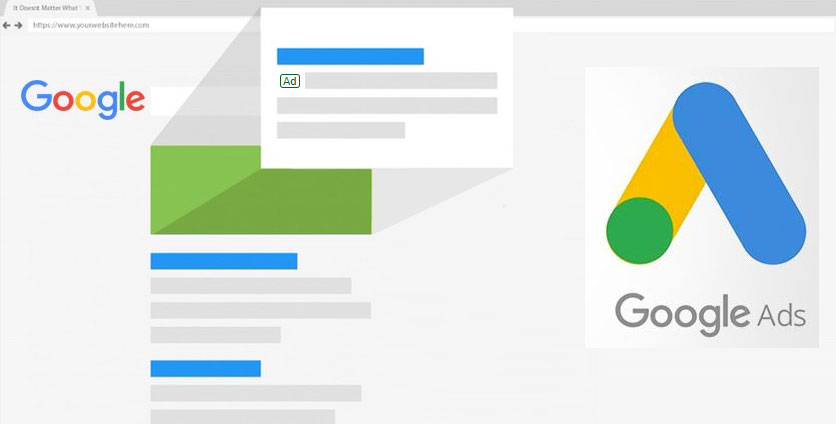Creating effective ad copy is much like crafting the perfect bait to lure in a fish. Just as a fish evaluates the bait based on its appearance, movement, and scent, potential customers judge your Google Ad by how it looks, what it says, and how it resonates with them. Let’s dive into the psychology behind ad copy and explore how to make your ads irresistible.
Analyzing Competitor Ads: Learn from the Best
Think of competitor ads as the tried-and-true fishing lures. Before you start creating your ad, take a close look at what’s already working in your niche. Break down successful ads to understand the elements that make them click-worthy. Are they using certain keywords or phrases? Is there a particular tone or style that stands out?
Equally important is identifying what to avoid. If you spot common pitfalls in competitor ads, make a note of them. This approach not only saves you time but also helps you create more effective ads by learning from others’ successes and mistakes. Tools like BuzzSumo, SpyFu, Semrush, and SimilarWeb can help streamline this process.
Crafting Compelling Ads: Step into Your Audience’s Shoes
Your target audience is on a quest for something specific when they conduct a search. To hook them, your ad needs to be a seamless continuation of their search journey. Imagine the mindset of your potential customers: What information are they looking for? What emotions are driving their search?
Striking the right balance of information, emotion, and assistance is key in the Google Ads process. Your ad should feel familiar and reassuring while providing just enough excitement to prompt a click. After writing your ad, take a step back and view it from the audience’s perspective. Does it speak to you? If not, tweak it until it does.
Powerful Call-to-Actions: Drive the Desired Action
Your ad’s call-to-action (CTA) is the hook that seals the deal. It needs to be clear, compelling, and aligned with what your audience is looking for. Whether it’s “Learn More,” “Get a Quote,” or “Buy Now,” your CTA should guide the potential customer toward taking the next step.
Adhering to Google’s Character Limits: The Art of Brevity
Just like a well-crafted license plate, your ad copy needs to be concise yet impactful. Google’s character limits are non-negotiable, so it’s crucial to stay within these bounds:
- Headline 1: 30 characters
- Headline 2: 30 characters
- Headline 3: 30 characters
- Description 1: 90 characters
- Description 2: 90 characters
- Path (2): 15 characters each
Use tools like BlueWinston and NordicClick to test your ad formats and ensure they comply with these limits.
Google Search Ads Guidelines: Stay Within the Law
Think of Google’s ad guidelines as the fishing regulations. They are there for a reason, and it’s essential to adhere to them to avoid penalties. Google prohibits ads related to hate groups, sexual content, misleading information, malware, and targeting minors, among other restrictions. Always check the Google Ads Policy Center to ensure your ads meet these standards.
The Power of Words: Hook Your Audience
Creating compelling ad copy is both an art and a science. You have a mere seven seconds or less to capture the attention of your audience, much like a billboard on the highway. Your words need to be precise, relevant, and engaging. Avoid being too bland or overly excited. Instead, aim for a tone that’s just right to draw in your potential customers and encourage them to click.
Conclusion: Hooking Your Audience with Precision
Great ad copy can be the strong hook that draws in a steady stream of customers or the weak link that lets them slip away. By understanding the psychology behind what makes an ad appealing, analyzing competitors, crafting compelling messages, adhering to guidelines, and using powerful CTAs, you can create Google Ads that not only meet parameters but also resonate deeply with your audience. Remember, your ad is the bait—make sure it’s bright, alive, and enticing enough to get the fish to bite.
Related Posts:
- Prioritizing Relevancy Over Volume in Keyword Selection
- The Critical Importance of Landing Page Construction in PPC Campaigns
- The Secret Sauce of Google Ads Campaigns: Mastering Ad Groups
- The Essential Role of Phone Call Tracking in Modern Google Ads Campaigns
- A Comprehensive Guide to Google Ads Campaign Monitoring and Optimization
- Effective Strategies for Adding New Keywords in Google Ads Campaigns
- Ultimate Optimization Guide to Bidding Adjustments in Google Ads
- The Power of Negative Keyword Filtering to Boost Your Google Ads Efficiency
- Advanced Reporting Techniques for Optimal Google Ads Performance









